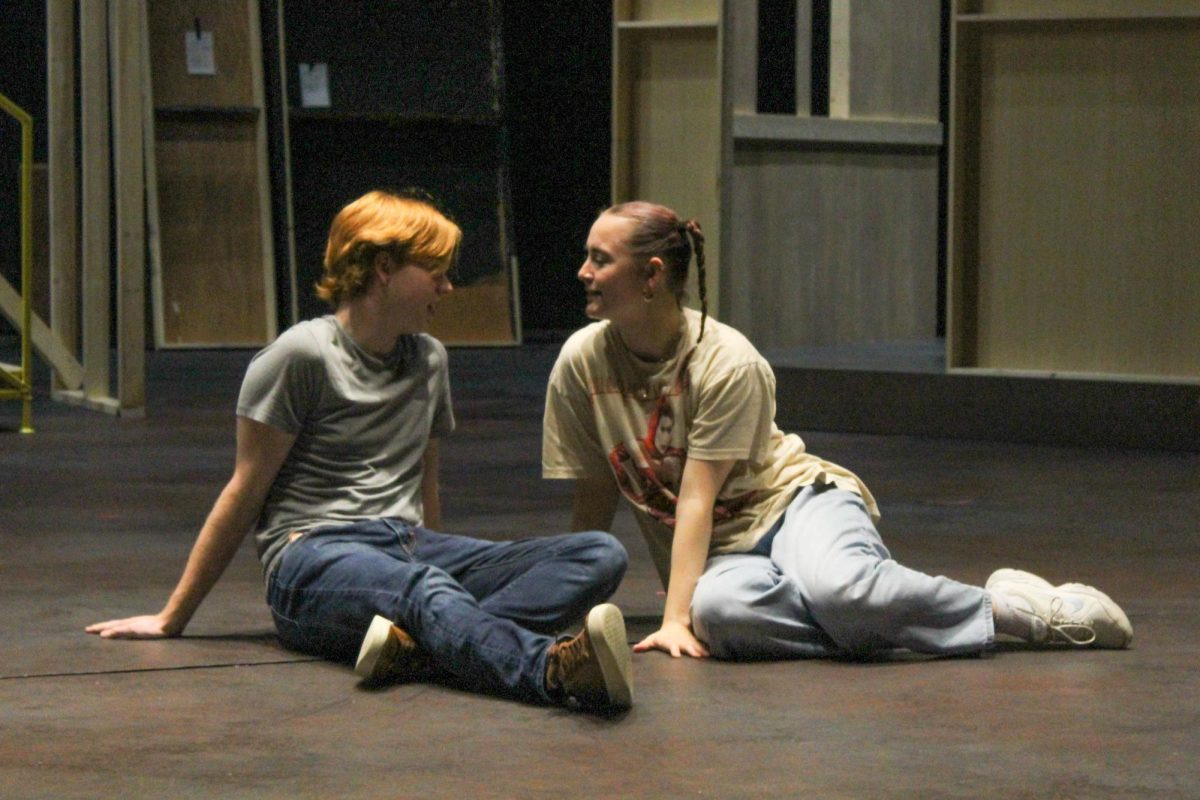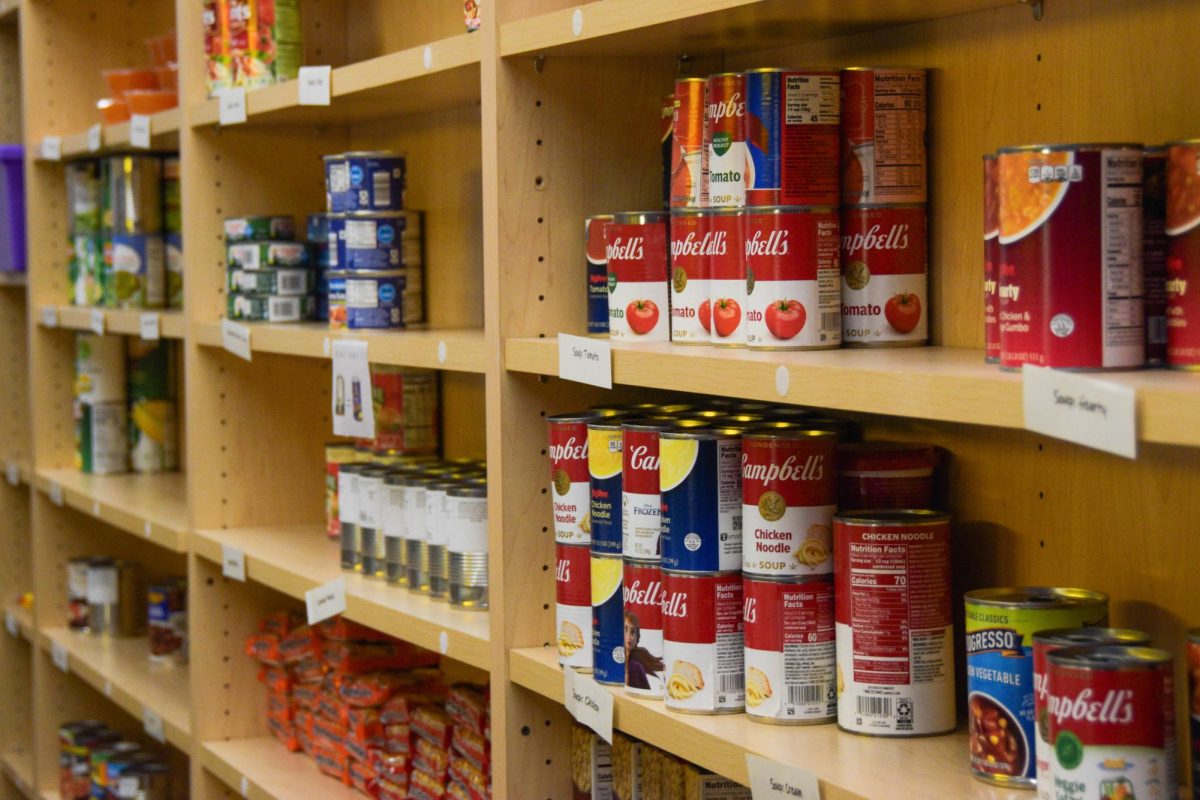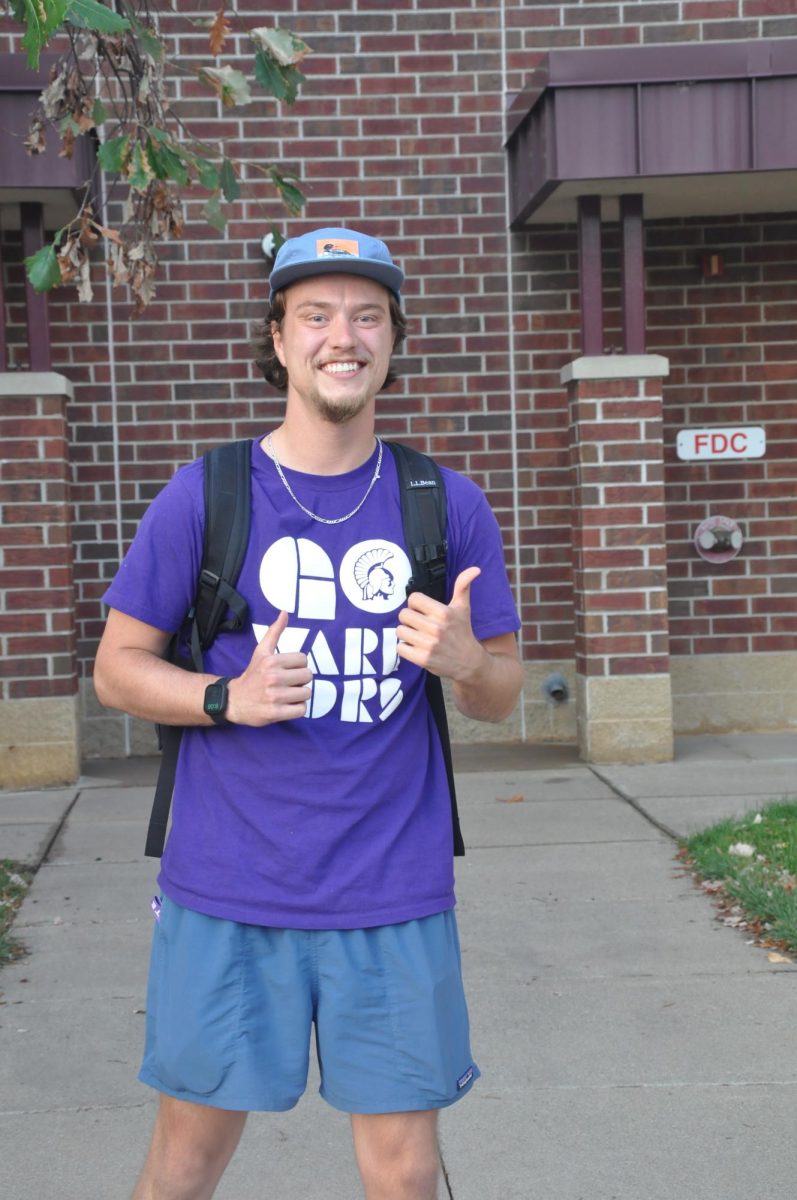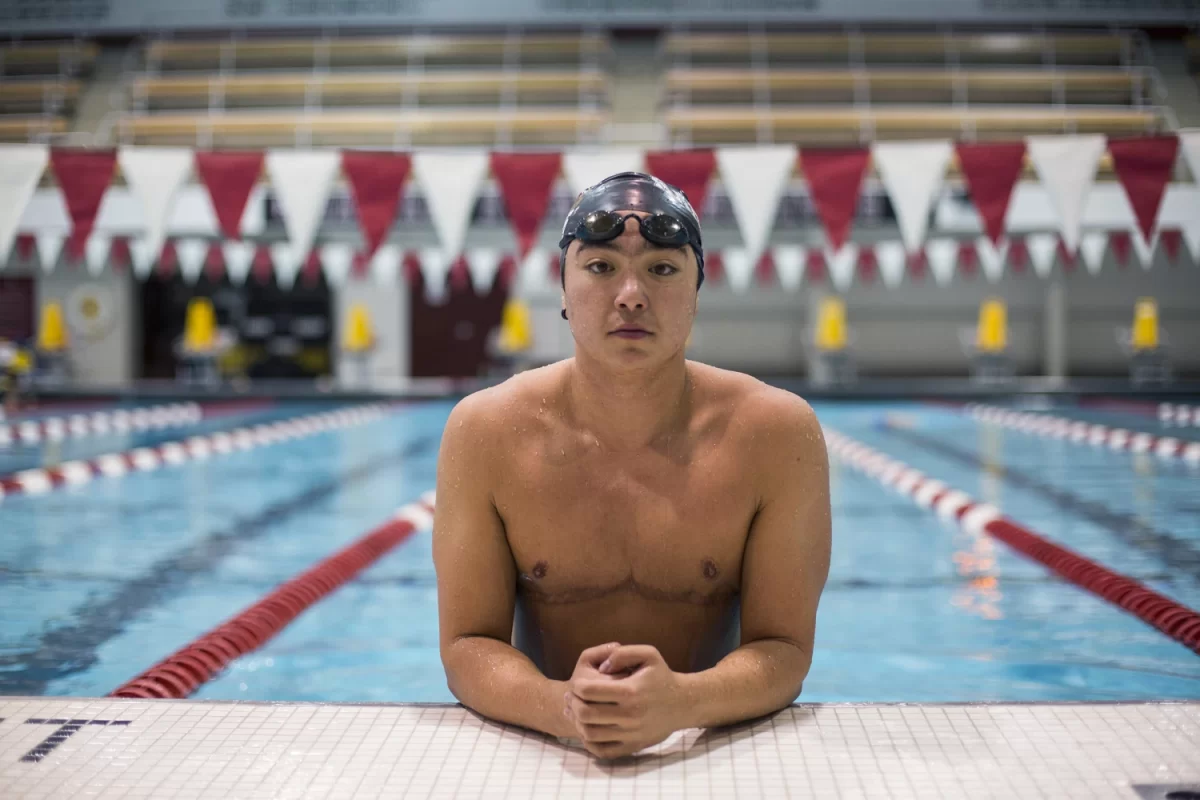Jordan Gerard/ Winonan
In the center of Winona State University’s campus is a statue amidst fountains, flowers and trees depicting a Native American slumped over on a horse, titled End of the Trail.
The connotations surrounding this statue, sculpted by James Earle Fraser and donated to Winona State by the late Winona State sociology professor Ervin Bublitz, are negative and incorrect, Aaron Camacho, a second-year, non-traditional student who is also part American Indian, said.
“A lot of people thought it was to honor people who are no more, which is a misconception because these people are still thriving,” Camacho said, “Their nations still exist, they were just relocated. A lot of people don’t know the history of this part of Minnesota that pertains to relocation.”
The correct connotation of the Native American on the horse is that he is returning from a long hunt. Because the connotation is misunderstood, Camacho said diverse students feel excluded.
The library’s mural depicting Sioux princess Wenonah and the statues also contribute to this feeling, Camacho said.
“It wasn’t very positive for their environment, it’s just something that reminds them every day of the miseducation in the education system and in U.S. history in general,” Camacho said, “and that feeds into the cultural misunderstandings that feeds into the levels of diversity, or lack thereof here at Winona State.”
This feeling could soon change with the creation of an indigenous learning garden. The area around the statue will be renovated with new flowers and benches.
The purpose is to “reframe” the End of the Trail statue and address the misunderstandings surrounding Native American peoples, especially the Dakotas because this is their homeland, Camacho said.
“A lot of people don’t know that unless they go to the [Great Dakota] Gathering,” she said, “but once the gathering is done and they go home, there’s nothing to signify that they were here. It’s back to the eerie silence.”
Camacho started this project from a class presentation and later took it to the inclusion and diversity committee, who directed her to an ad-hoc committee, made up of student senate and inclusion and diversity students. The project is now getting approved as an extension of the inclusion and diversity committee.
Along the way, others have helped Camacho. Alex Paulson, a junior education major, joined in. Recently, they received a letter of support from student senate for creating the garden.
“I think that’s one of the goals here to address the welcoming feeling,” Camacho said, “It’s an opportune time for our university to actualize inclusion and diversity with a well-rounded program.”
Seven years ago, a group of faculty tried to get a learning garden implemented around the same statue. The university said it would be built, but the recession hit and the project fell through the cracks, lost momentum and it’s funding was probably given elsewhere, Camacho said.
In the meantime, other projects were funded and completed.
Camacho said she hopes the garden will be as inclusive as possible.
“Based on the feedback we have gotten so far, it’s been positive. People are excited for this to happen, people have been saying ‘just get it done, don’t let it fall through the cracks,’” Camacho said.
The university administration said it is also on board with the project.
For the first time, the seed ceremony took place in the Science Laboratory Center Atrium.
Winona State President Scott Olson and Winona Mayor Mark Peterson attended the opening ceremony on Friday, Sept. 12, where the president gave a declaration to the indigenous elders, and the mayor said he was looking forward to the completed project.
“We are being proactive rather than trying to find a cure after there is an issue because there aren’t a lot of Native Americans on campus, and this is how we are representing those people,” Camacho said, “It’s not in a positive light, which is probably why there aren’t a lot of Native Americans here.”
The art collection committee, a committee who handles artwork on campus, is supporting this project and is “enthusiastic” Camacho said.
The arboretum and land stewardship committee, who is in charge of creating and maintaining what is on school grounds, is also supporting the garden.
All the project needs is a letter of approval for the construction to begin in May, Camacho said.
If everything goes accordingly, Camacho said they hope to have the garden done in mid-August, in time for the 12th annual Great Dakota Gathering, the 154th anniversary of the Dakota 38+2 and Winona State’s theme of social diversity for the 2015-2016 school year.
“The fact that we’ve had overwhelming support is encouraging,” Camacho said. “It’s our chance to address history in an appropriate manner.”


































































